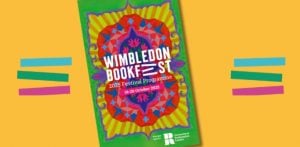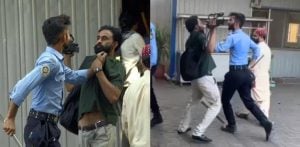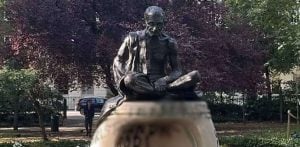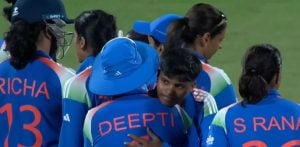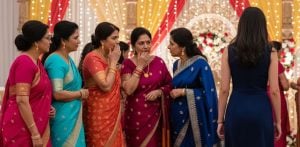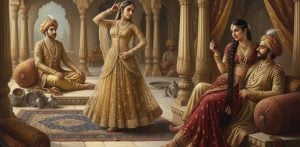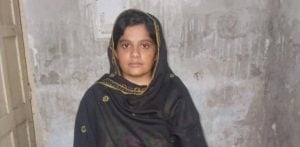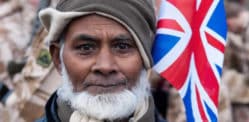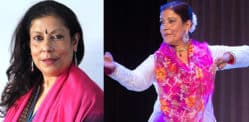the SADE initiative crossed a line between equity and ideology.
Is Indophobia quietly infiltrating Britain’s South Asian dance education system?
Over the past year, a research initiative backed by public funding has sparked a growing debate about how Indian dance is taught, perceived, and funded in the UK.
The South Asian Dance Equity (SADE) network was launched by three UK-based academics in January 2024 and it has placed caste politics at the centre of dance education reform.
Funded by the Arts and Humanities Research Council (AHRC), SADE is reimagining the South Asian arts sector through a new caste-based framework, one that divides artists into “caste-oppressed” and “caste-dominant” groups.
While the network claims to pursue justice and inclusion, its approach has raised red flags among educators, artists and students.
Why are Indian classical forms being reframed as tools of caste supremacy?
And why is Hindu Indian identity, so often central to the origins and practice of these art forms, being portrayed as an obstacle to progress?
At the heart of this controversy lies a deeper issue: how British dance institutions and academic researchers are reshaping the curriculum and funding of South Asian dance education in ways that many argue are ideologically driven, historically flawed, and disturbingly anti-India.
We explore how SADE’s interventions are altering the landscape of British South Asian dance education, and whether these changes signal a dangerous new phase of Indophobia masked as equity work.
When Research becomes Ideology

SADE’s influence began with a provocative event in early 2024 titled South Asian Dance in Britain: Decentring India and Hinduism.
The objective directly counters the concept of greater Indian influence in the subcontinent, including Bangladesh, Pakistan, Afghanistan, Sri Lanka, Bhutan, the Maldives, and Nepal.
While Bharatanatyam, Kathak and classical dance artists envision modern South Asia as part of an ancient Indic cultural sphere and historic Indian civilisation, SADE academics unduly induce the divisive ideologies accusing caste discrimination.
For many in the dance world, the SADE initiative crossed a line between equity and ideology.
SADE labelled traditional art forms as “India/Hinducentric”, which are associated with the oppressive ideologies of Hinduism, Hindutva, and caste discrimination.
By doing so, SADE risks discrediting a century of educational and artistic progress in the UK.
Not only does it misrepresents the history of these forms but also alienates the British Hindu Indian artists who have carried them forward.
Dance educators have expressed concern that this ideological lens is influencing curriculum design, funding decisions and student perceptions.
The implication is clear: to teach or perform Bharatanatyam in its traditional form is to participate in a system of caste-based exclusion.
This outlook amounts to a form of Indophobia cloaked in social justice language.
Caste Census in the Studio

The most controversial part of SADE’s campaign has been its effort to introduce caste-based categorisation into arts education and funding.
In March 2025, the network launched the South Asian Dance Sector (SADS) survey, distributed across the UK, US and South Asia.
The survey asked artists and stakeholders to classify themselves as coming from either “caste-dominant” or “caste-oppressed” backgrounds.
This binary framing ignores the complexities of caste, community, and migration.
More importantly, it imposes a retrospective caste identity on artists who may never have engaged with caste in their personal or professional lives.
Within the context of UK education, this amounts to ideological profiling that risks labelling young South Asian dancers based on assumptions tied to ancestry rather than lived experience.
Some educators have raised ethical concerns.
Should a dance teacher be asked to disclose caste background to qualify for funding? Should a student’s cultural heritage determine whether they’re considered a beneficiary or a beneficiary of historical injustice?
These are not theoretical questions, they are shaping how dance schools apply for grants, recruit faculty, and present course content.
If adopted more widely, this approach could create a generation of South Asian dancers taught not to honour their heritage but to see it as oppressive.
It’s a direct challenge to the multicultural ethos that has underpinned British South Asian dance education for decades.
Lost Memories in the Classroom

The SADE initiative presents caste as the defining feature of Indian classical dance but this narrative erases a rich history of inclusivity and reform.
After India gained independence in 1947, leaders like Maulana Azad championed the arts as a unifying force.
National academies were set up to nurture classical, folk, and tribal forms without caste distinctions.
Caste data was deliberately not collected in the arts sector, on the belief that it would be divisive.
That legacy shaped how Indian dance was taught and performed in the UK.
In the 1980s and 1990s, British arts institutions integrated classical Indian forms into a multicultural curriculum.
Bharatanatyam and Kathak became fixtures in school performances, conservatories, and community events because they connected young British Asians to their roots.
SADE’s approach disregards this history.
It retrofits caste narratives onto art forms that have, for more than 70 years, been sites of pluralism and progress.
In doing so, it undermines the achievements of generations of educators who have fought to keep these forms alive in diaspora contexts.
Indophobia in the Name of Equity

The heart of SADE’s mission is what it calls “decentring India and Hinduism” in South Asian dance.
But what does this actually mean in practice?
The eight classical dance forms officially recognised by the Indian government, Bharatanatyam, Kathak, Odissi, Manipuri, Kathakali, Kuchipudi, Mohiniattam, and Sattriya, all closely link to Indian cultural heritage.
To decentre these forms is not merely a pedagogical shift; it is an ideological rejection.
It suggests that Indian culture is not just dominant, but dangerous.
This framing turns a celebration of cultural depth into a battleground of identity politics.
By doing so, SADE’s academics risk introducing a form of Indophobia into the very institutions tasked with educating the next generation of British South Asian artists.
Students are taught to interrogate Indian traditions not as sources of creative power, but as artefacts of systemic abuse. This goes beyond healthy critique, it veers into cultural denigration.
Who Benefits?

SADE’s rebranding of classical Indian dance has been supported by over forty academics and has received significant public funding.
Yet questions remain about who benefits from this reframing.
Is it the marginalised artists the project claims to champion or the academics building careers in anti-caste activism?
There is a growing sense that this is less about reforming dance education and more about scoring ideological points.
In trying to dismantle hierarchies, SADE may be creating new ones, where artists are judged not on skill or experience, but on how well they fit into a political framework.
This is particularly dangerous in an underfunded sector.
South Asian dance in Britain already struggles for visibility and resources.
Injecting caste politics into the funding process risks turning institutions against one another, rather than fostering the solidarity that has kept the community alive through austerity and marginalisation.
Reclaiming British South Asian Dance Education

What British South Asian dance education needs now is not more division, but greater clarity and integrity.
Equity matters. Inclusion matters.
But so does cultural accuracy.
It is possible to uplift marginalised voices without vilifying Indian classical traditions.
Dance should remain a space of exploration, not one of ideological rigidity.
Students and educators deserve the freedom to honour their heritage while also questioning it.
But when critical engagement becomes condemnation, and when re-education becomes erasure, the system is no longer serving its purpose.
The AHRC, Arts Council England and other institutions must take these concerns seriously.
Funding should support diverse interpretations of South Asian dance, not enforce new orthodoxies based on imported ideologies.
Education policy should focus on cultural literacy, not cultural labelling.
SADE’s attempt to reframe British South Asian dance education around caste justice may have begun with good intentions.
But its execution has laid bare deeper ideological assumptions, particularly an undercurrent of Indophobia that risks damaging the very communities it claims to support.
British South Asian dance education has always been a site of negotiation, identity, and transformation.
It must remain so.
But those leading the conversation must be willing to listen to the voices of artists, educators, and students who feel sidelined by SADE’s approach.
Equity cannot be achieved through misrepresentation. And inclusion cannot come at the cost of cultural truth.
As debates around caste, identity and power continue, we must ensure that South Asian dance in Britain remains a shared space, rich with difference, grounded in history, and open to all.






